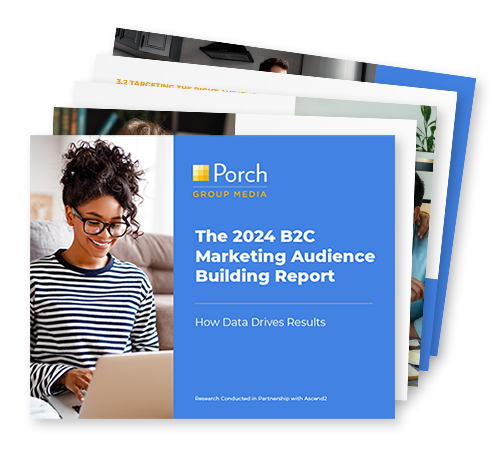The ability to buy with one click from a social media post was something we could have only imagined when shopping at the local mall 20 years ago…
It’s 2025, and the lines between brick-and-mortar and online stores are blurring.
While people still love shopping in-store, consumers increasingly turn to online shopping.
Life is busy and fast-paced, filled with hectic days of errands, kids’ soccer practices, chores (and the list goes on and on).
The ease and convenience of shopping online is something consumers across generations enjoy.
Physical stores still play a vital role, but e-commerce has truly exploded. It has transformed retail into a highly dynamic, omnichannel experience.
The seamless ability for marketing to drive online sales has completely changed the world of retail.
40 Retail Shopping Statistics for 2025
Businesses need to understand how the shopping landscape has evolved to this point and where e-commerce is headed in the future. We will explore some important statistics that will help guide you in your understanding of today’s retail shopper.
1) The average American consumer spends $21,127 on retail over 12 months.
2) eCommerce sales growth outpaced brick-and-mortar sales growth by 428%.
3) Currently, about 20% of all retail sales happen online, compared to 80% in physical stores.
4) 72% of consumers shop in brick-and-mortar stores on a weekly basis, while 34% of shoppers shop online at least once a week.
5) When in a store, 82% of mobile users will search on their phone for more information
6) 72% of consumers say they ‘showroom’— they visit a retail store to experience the products and purchase it elsewhere or online.
7) The average number of products per ecommerce order is 4.41.
8) The average ecommerce conversion rate is 3.52%
9) 58% of U.S. shoppers stated “Direct delivery to my home” as their primary e-commerce purchase driver. Some other top reasons included convenience, pricing, product range, and ability to shop at any time of day or night.
10) More than 90% of U.S. shoppers typically look for deals and discounts before making an online purchase.
11) Free shipping is the most important ecommerce delivery criterion for U.S. shoppers.
12) 90% of shoppers believe they can find better deals online than in-store.
13) 61% of consumers say they prefer retailers with Augmented Reality experiences.
14) 52% of online shoppers report shopping internationally.
15) The online shopping cart abandonment rate is 70%.
16) 47% of online shoppers abandon their cart because of additional costs like shipping, taxes and fees.
17) 25% of online shoppers abandon their cart because the site wanted them to create an account
Mobile Use + Ecommerce
18) 91% make online purchases using their smartphone.
19) Mobile commerce sales are expected to account for 62% of all retail sales by 2027.
20) 91% of mobile device owners have made a purchase after seeing a relevant ad
21) If a smartphone user can receive rewards or points, 51% will be more likely to use a company’s mobile app when shopping
22) Over 50% of people make a purchase from a marketing text
23) When special offers are sent via text, they are redeemed 10x more often than other types of coupons and offers.
Digital Payment Options
24) Digital wallet payments account for about half of all ecommerce payments around the world.
25) BNPL results in an 85% higher average order value than when customers use other payment methods.
Consumer Habits:
26) 81% of retail shoppers conduct online research before buying.
27) 40% of shoppers start their buying journey with a broad search.
28) 47% of consumers were more likely to purchase from a brand because of its local presence.
29) 32% of U.S. shoppers switched brands because of their sustainability practices, with 53% of organizations are prioritizing sustainability.
Social Media + Retail
30) Social media commerce is expected to reach $8.5 trillion by 2030.
31) 106.8 million people in the United States shop on social media.
32) Millennials shop on social media the most—55% of people aged 18 to 24 in the United States have made a purchase on social media
33) 40% make a purchase because of social media influence
34) 49% of social commerce shoppers have had an influencer’s recommendation impact their purchase.
35) U.S. social sales are expected to grow to over $144 billion by 2027.
36) Adult social media users in the U.S. are most likely to make purchases through Facebook. Facebook is expected to have over 69 million social buyers in 2025. Instagram follows right behind it, with 47 million expected social buyers by 2025.
37) Almost 70% of Gen Z shoppers are likely to make purchases directly on TikTok.
38) Livestream delivers conversion rates of up to 30%, which is 10 times higher than e-commerce.
39) Some 62% of consumers watch videos to learn about a product or brand before they buy.
40) 53% of global consumers intend to shop more through social platforms in the future.





